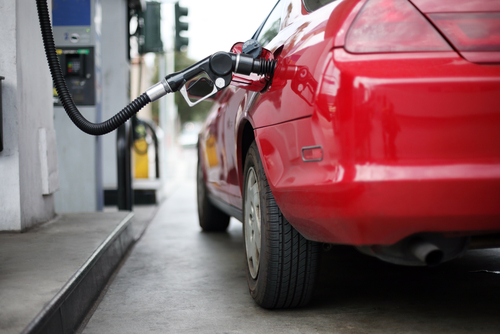Federal Regulators Take 54.5 MPG Goal Off The Table
![]() Print this Article | Send to Colleague
Print this Article | Send to Colleague

It appears the auto industry will get a reprieve from being forced to meet a strict fuel economy standard of 54.5 mpg by the year 2025. The Environmental Protection Agency (EPA), National Highway Traffic Safety Administration (NHTSA), and California Air Resources Board (CARB) recently released their draft Technical Assessment Report, which indicated that the 54.5 mpg number is now off the table, in favor of a more attainable goal.
The original 54.5 mpg mark was based on estimates that over two-thirds of the vehicles on the road would be cars by 2025. But falling gas prices have kept consumer demand for pickups and SUVs going longer than previously anticipated.
Americans are just too in love with their light trucks and SUVs to make the 54.5mpg Corporate Average Fuel Efficiency (CAFE) goal happen, according to the report. It lays out the case for why we could meet the 2012 plan—which would have doubled fleet fuel economy, halved greenhouse gas emissions, and saved 12 billion barrels of oil, and prevented 6 billion tonnes of CO2 from entering the atmosphere between now and 2025—but won't.
The report—which stretches out to over 1200 pages—spends plenty of time discussing cool technological advances, including improvements to gasoline internal combustion engines, better transmissions, mild (48v) and high-voltage hybrids, battery electric vehicles, fuel cell EVs, and more, but the bad news gets going in Chapter 12. The report projects that 46.3 mpg is where we'll be when it comes to CAFE in 2025, a drop of 15 percent compared to where levels were hoped to be.
The 2022-2025 CAFE targets were not finalized back in 2012 (as well as the fact that CAFE mpg numbers are not the same as the EPA fuel efficiency figures used when deciding what car to buy). But the assumptions that underpinned that target were based on a fleet that was two-thirds passenger cars and a third light trucks and SUVs. Now, the agencies have revised that based on consumer demand to a near-50:50 mix (52 percent cars, 48 percent trucks to be exact).
This prompted the decision by federal regulators to lower the original 54.5 mpg goal, which officials said was never a mandate. It was, in reality, an estimate of where the industry could be by the year 2025. This new estimate assumes that there will be a more even split between cars, trucks, SUVs. After electing to shoot for a more achievable target, federal regulators praised the auto industry for "adopting fuel economy technologies at unprecedented rates."
"Car makers and suppliers have developed far more innovative technologies to improve fuel economy and reduce GHG emissions than anticipated just a few years ago," the agencies said in a press release.
This report is only a draft, and according to Automotive News, the government won't make an official decision on CAFE standards for 2022 to 2025 until April 1, 2018.

